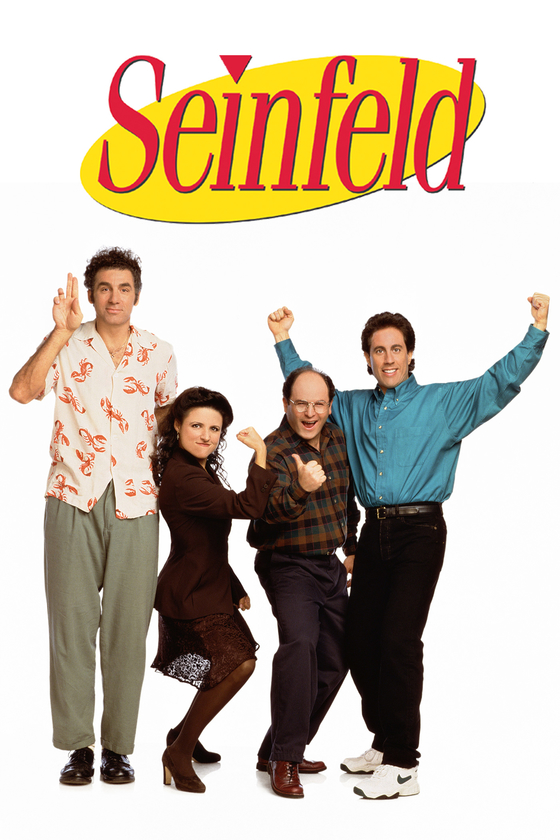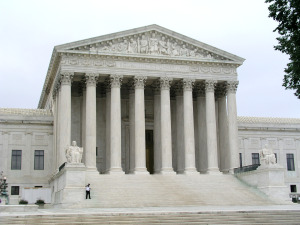
Haley Hurst
All Dressed Up With No One to Sue: Naked Nirvana Baby’s Case Dismissed With Prejudice
On September 24, 1991, grunge rock band Nirvana “gave voice” to Generation X with its debut album, Nevermind.[1] Nevermind was the “first full expression of punk concerns to achieve mass-market success in the United States.”[2] However, the album’s genre was not the only aspect of Nevermind that shocked American consumers.
Nevermind’s cover famously features a photo of Spencer Elden, then four months old, swimming nude and reaching for a dollar bill.[3] To some, the image represented the idea that you “spend your entire life chasing money from the moment you come out of the womb, all the way up until the day that you end up in the casket.”[4] For others, namely Spencer Elden, the image of Elden “with his naked genitals displayed while grabbing at money resembles the actions of a sex worker.”[5] Elden claims the controversial cover was a gimmick to “garner attention by using a sexually explicit image that intentionally focused on Spencer’s . . . genitals.”[6]
On November 22, 2021, more than thirty years after Nevermind hit shelves, Elden filed a complaint against Nirvana, L.L.C.; the individual band members, including Kurt Cobain’s estate; Universal Music Group, Inc.; UMG Recordings, Inc.; The David Geffen Company; MCA Records; and Kirk Weddle, the photographer (collectively Defendants).[7] Elden’s Complaint alleged that Defendants violated the following child pornography statutes: 18 U.S.C. §§ 2252A(a)(5)(B), 2252A(a)(1), 2252A(a)(2)(a), 2252A(a)(2)(b), 2252A(a)(3)(a), 2252A(a)(3)(b), and 2252A(a)(6) (together “Child Pornography Statutes”).[8] Elden prayed for a jury trial, $150,000 in damages from each defendant, and all reasonable legal fees.[9] After failing to meet a filing deadline in December of 2021, Elden’s case was dismissed with leave to amend.[10] Elden refiled on January 12, 2022.[11]
The crux of Elden’s claims is 18 U.S.C. § 2255, also known as Masha’s Law.[12] Under Masha’s Law, victims may sue violators of the child pornography statutes for actual or liquidated damages.[13] Such violations include knowingly reproducing, advertising, promoting, presenting, distributing, and soliciting any obscene visual depiction of a minor engaging in sexually explicit conduct.[14] However, the suit must be brought “(1) not later than 10 years after the date on which the plaintiff reasonably discovers the later of– (A) the violation that forms the basis for the claim; or (B) the injury that forms the basis for the claim; or (2) not later than 10 years after the date on which the victim reaches 18 years of age.”[15]
Defendants were quick to point out several deficiencies in Elden’s Complaint, particularly that Elden brought this suit approximately thirty years after the initial photo was taken and circulated on the cover of Nevermind.[16] Defendants filed a motion to dismiss (“Motion”) pursuant to Fed. R. Civ. P. 12(b)(6), contending that Elden’s claims are time-barred by the Masha’s Law statute of limitations.[17] On September 2, 2022, Judge Fernando M. Olguin, sitting in the United States District Court for the Central District of California, granted Defendants’ Motion.[18]
In granting Defendants’ Motion, Judge Olguin reasoned that Elden “fail[ed] to allege that he knew of a violation that occurred while he was a minor or an injury that forms the basis of the claim within ten years of filing this action.”[19] Judge Olguin’s opinion also accepted Defendants’ definition of “injury.”[20] In their brief, Defendants claimed that an “injury” is “the moment a plaintiff first discovers his victimization by the defendant.”[21] By Defendants’ logic, Elden’s statute of limitations would have extended, at the latest, to Elden’s twenty-eighth birthday, even if Defendants continued to circulate the allegedly illegal image after that point.[22] Applying Defendants’ definition of “injury,” Judge Olguin opined that “[Elden] does not dispute that he knew of the alleged violations committed by defendants while he was a minor more than ten years before he filed this action.” [23] However, this reasoning is inconsistent with the way Child Pornography Statutes apply in criminal proceedings.
The Court claims that Elden’s statute of limitations has expired because Defendants’ initial use of Elden’s image, or the “predicate violation,” was more than ten years ago.[24] However, by this standard, Judge Olguin implies that victims are only injured, and therefore only eligible for relief, the first time the explicit image is used or distributed. If Judge Olguin’s standard were applied to the criminal context, criminal defendants would only be subject to discipline for the earliest violation of the Child Pornography Statutes, and each subsequent violation could not sustain a criminal charge. This understanding is in error. Instead, the Child Pornography Statutes are violated separately by each prohibited use of child pornography.[25] For example, in United States v. Gallardo, the court did not subject the defendant to double jeopardy by charging him with four separate counts of distributing child pornography under the Child Pornography Statutes, even though three envelopes were dispatched simultaneously.[26] The Gallardo Court reasoned that the defendant “mailed four separate envelopes containing child pornography, thus committing four separate acts of transporting or shipping.”[27] Because “the act of either transporting or shipping” child pornography is prohibited by the Child Pornography Statutes, “each separate use of the mail to transport or ship child pornography should constitute a separate crime.”[28]
Applying that logic to Elden’s case, each prohibited distribution of the allegedly pornographic image violates the Child Pornography Statutes.[29] While it is undisputed that Elden has known about the first use of his photo for more than ten years, the photo continues to be distributed each time Nirvana sells a copy of Nevermind, and over 30 million copies of Nevermind have been sold.[30] Further, Nirvana released Nevermind (Remastered) in 2021 with the photo of Elden on the cover.[31] If the photo violates the Child Pornography Statutes as Elden alleges, each new distribution of the image independently violates the Child Pornography Statutes.[32] This is not a case where an isolated offense took place over ten years ago and the plaintiff is just now bringing suit; this is a case where Defendants’ have repeatedly engaged in conduct that independently violates the applicable statutes. In the criminal context, each new distribution of the image, standing alone, would be sufficient to sustain a criminal charge.[33] The same should be true of the civil context. Elden’s Complaint even specifies that he is only bringing suit for the new violations that have taken place between 2011 and 2021.[34] Consequently, Elden’s claim should not be time-barred under Masha’s Law.
The Court’s assertion that Elden’s suit is time-barred also appears to apply equitable estoppel rationale disguised as expiration of the applicable statute of limitations.[35] The Court emphasizes Defendants’ contention that “[a] statute that runs from the date of one’s reasonable discovery cannot be suspended indefinitely while a plaintiff is fully on notice that a known person does the same thing to him, in the same manner, for more than 10 years.”[36] This rationale appears to emphasize the idea that it is unfair for Elden to contest the use of his image now when he has encouraged its use in the past.[37] However, the fact that it would be unfair for Elden to recover does not change the fact that Defendants have engaged in new conduct within the last ten years that could plausibly entitle Elden to relief.
In sum, Elden’s case should not have been dismissed on statute of limitations grounds. By conflating statute of limitations with equitable estoppel, Judge Olguin’s opinion creates a potentially dangerous precedent that frustrates the purpose of Masha’s Law.[38] As for the viability of Elden’s Complaint beyond its timeliness -– “well, whatever, nevermind.”[39]
[1] Jon Savage, Nirvana, Britannica (Oct. 25, 1999), https://www.britannica.com/topic/Nirvana-band.
[2] Id.
[3] Jenny Desboroug, The Story Behind the Baby on Nirvana’s ‘Nevermind’ Album Cover, Newsweek (Aug. 25, 2021, 4:22 AM), https://www.newsweek.com/story-behind-baby-nirvana-nevermind-album-cover-spencer-elden-baby-1622775#:~:text=Elden%20was%20four%20months%20old,Weddle%20behind%20the%20iconic%20image.
[4] Joe Taysom, The Cover Uncovered: The story behind Nirvana’s ‘Nevermind’ artwork, Far Out Magazine (Dec. 10, 2020, 12:00 GMT), https://faroutmagazine.co.uk/nirvana-nevermind-cover-story/.
[5] Plaintiff Spencer Elden’s Opposition to Defendants’ Motion to Dismiss at 5, Elden v. Nirvana L.L.C., No. CV 21-6836 FMO, 2022 U.S. Dist. LEXIS 159390 (C.D. Cal. Sep. 2, 2022).
[6] Id.
[7] Plaintiff’s Verified Amended Complaint Pursuant to 18 U.S.C. 2255 and 1595 at 1, 32, Elden v. Nirvana, No. CV 21-6836 FMO, 2022 U.S. Dist. LEXIS 11023 (C.D. Cal. Jan. 3, 2022).
[8] Id. at 23-29.
[9] Id. at 1, 29.
[10] Elden v. Nirvana, L.L.C., et al., No. CV21-6836 FMO (AGRx), 2022 WL 167453, at *1 (C.D. Cal. Jan. 3, 2022).
[11] Elden v. Nirvana, L.L.C., et al., No. CV216836 FMO (AGRx), 2022 WL 4079271, at *1 (C.D. Cal. Sept. 2, 2022).
[12] Id. Masha’s Law is named after a five-year-old orphan whose adoptive father produced and distributed hundreds of sexually explicit images of her. Legal Remedies for Victims, Child Pornography Victims Deserve Justice, https://childvictims.us/section-2255/ (last visited Sept. 17, 2022). Masha’s Law “allows civil suits by minors against sex abuse perpetrators who violate a variety of crimes against children, including . . . child pornography crimes.” 163 Cong. Rec. S1635 (daily ed. March 7, 2017) (statement of Sen. Dianne Feinstein).
[13] 18 U.S.C. § 225(a) (2018).
[14] 18 U.S.C. § 2252A(a)(3)(B) (2018).
[15] 18 U.S.C. § 2255(b)(1)-(2) (2018).
[16] Elden, 2022 WL 4079271, at *2.
[17] Id.
[18] Id. at *4.
[19] Id.
[20] Id. at *3.
[21] Id.
[22] See id. at *2.
[23] Id. at *3.
[24] Elden, 2022 WL 4079271, at *2.
[25] See United States v. Gallardo, 915 F.2d 149, 151 (5th Cir. 1990).
[26] Id.
[27] Id.
[28] Id.
[29] See id.
[30] Elden, 2022 WL 4079271, at *4; Tom Blackburn, How many copies has Nevermind sold? Nirvana album gets 30th anniversary reissue, Wales Online (Sept. 24, 2021, 4:40 PM), https://www.walesonline.co.uk/whats-on/music-nightlife-news/how-many-copies-nevermind-sold-21670330.
[31] Lauryn Schaffner, Nirvana ‘Nevermind’ 30th Anniversary Still Features Original Album Cover, Loud Wire (Nov. 15, 2021), https://loudwire.com/nirvana-nevermind-30th-anniversary-original-album-cover/.
[32] Gallardo, 915 F.2d at 151.
[33] See id.
[34] Elden, 2022 WL 4079271, at *3.
[35] The opinion tends to imply that Elden should be equitably estopped from bringing a claim now when his past actions would have indicated to the Defendants’ that he was perfectly okay with, or even encouraging, the Defendants to use his photo. See id. at *4; see also Est. of Hall v. HAPO Fed. Credit Union, 73 Wash. App. 359, 362 (1994) (“Equitable estoppel arises when a person’s statements or conduct are inconsistent with a claim afterward asserted and another has reasonably relied on the statements or conduct and would be injured by a contradiction or repudiation of them”).
[36] Elden, 2022 WL 4079271, at *4.
[37] Thom Patterson, Naked ‘Nirvana baby’ still chasing dollars, Cnn, https://edition.cnn.com/2008/SHOWBIZ/Music/12/11/nirvana.baby/index.html (last visited Sept. 12, 2022) (Elden made $1,000 recreating the photo and has given several interviews relating to the experience).
[38] See 163 Cong. Rec. S1635 (daily ed. March 7, 2017) (statement of Sen. Dianne Feinstein).
[39] Nirvana, Smells Like Teen Spirit (DGC Records 1991).
Photo by Vishnu R Nair via Pexels




